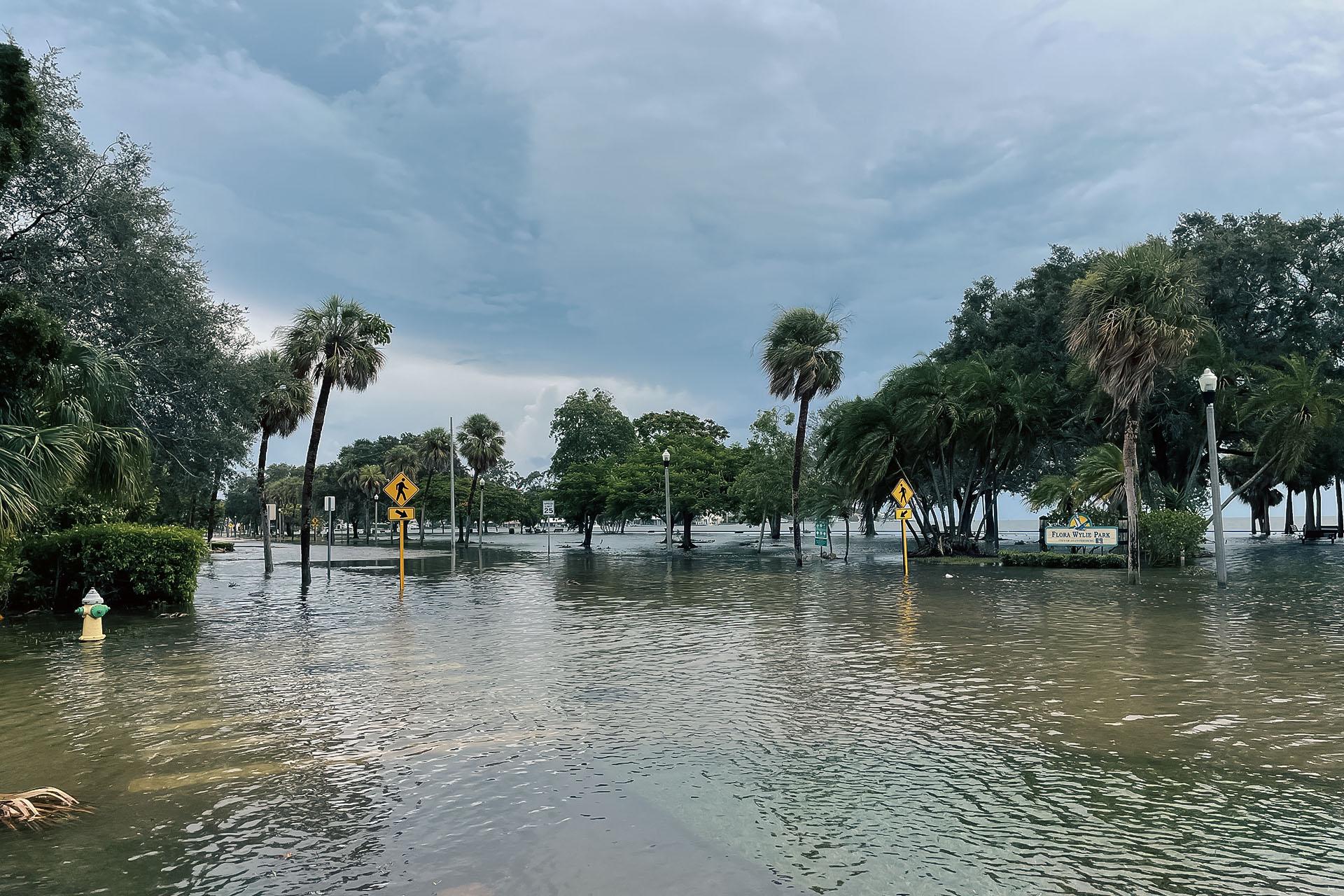Inspired by a conversation with my fiance on a hot day.
“Up next, Marshall Couper,” my teacher, Mrs. Smithson, announced.
I gathered my papers and marched to the front of the classroom. Mrs. Smithson helped me pull up my project onto the holoscreen. The lights in the class turned off, my first slide illuminating the faces of my classmates. A white screen with bolded letters was behind me as I prepared my presentation.
“‘The World that Floats,’ by me, Marshall Couper. My presentation will be about the transition to hover vehicles within the past century. Next slide please.”
A picture of a hover car, covered hover bike, and a row of hover scooters took over the screen. I started to read my papers. “Since 2089, hover vehicles have replaced all land-based transportation around the world, excluding parts of upper Canada and Siberia. This is because the ground outside has become too hot for these vehicles to touch. Next slide please.”
Mrs. Smithson tapped her virtuboard. The hover vehicle slide was replaced with several pictures of objects melting on the pavement. The most important pictures were of the tires on different terrestrial cars melting, but I included a picture of an ice cream cone boiling for fun. I could already hear my mom getting angry for trying to put my comedy career in my social studies report.
“In 2065, research towards alternatives to rubber-tire vehicles was accelerated. This was because the wet bulb temperatures caused the ground to heat up so much that the ster…sterile…styra—”
“Styrene-butadiene?” Mrs. Smithson corrected.
“Yes, styrene-butadiene, thank you. Styrene-butadiene, also known as synthetic rubber, started to melt on all roads. Once citizens had to have shoes that resisted heat so hot that it was melting rubbers, countries around the world started putting money into alternatives. I will be focusing on our country, the United States, specifically states that had events affected by this change. Next slide please.”
The next slide popped up, the shapes of five states were on the slide with their corresponding names: California, Texas, Florida, New York, and Pennsylvania. I didn’t put them in any particular order, hoping that wouldn’t bring my grade down if the order I put them in wasn’t the order I presented them in.
“These five states all had big events during this transition. First, California. Next slide please.” The slide changed to just a topographical map of the state of California. With another tap, arrows showed dots moving from the coast to inland.
“As California started to heat up, people started to move away from the coast and more inland, especially as hurricanes started to become as common on the west coast as they were on the east coast in the early twenty first century, versus them happening every two weeks on the east coast presently. This also occurred due to how many highways the state of California had; cars being unable to move their tires caused people’s cars to get stuck on the highway. At some point, airlifts were up five thousand percent, according to some studies done during the time. Currently, California’s coast is unlivable, with only a few small populations living underground near it. Next slide please.”
Florida was next, a cartoon GIF of Florida and its cars getting swept away by a hurricane repeated as I presented the slide. “With the massive increase in hurricanes due to warming temperatures and the introduction of hover cars, Florida has had a hard time adjusting. Since the cars were more of a lighter weight and could be pushed, escaping hurricanes became harder with hurricane winds able to push hover vehicles easily off the ground. The worst example of this was Hurricane Rachel. Hurricane Rachel was predicted to be a tropical storm in 2096, but was upgraded to a level seven hurricane by the time it made landfall in Fort Myers. Next slide please.”
A picture of Fort Myers completely flooded was presented to the class. It wasn’t actually from Hurricane Rachel, it was from Hurricane Christoph in 2048. I was hoping Mrs. Smithson wouldn’t notice I couldn’t find any pictures of the flooding from Hurricane Rachel. I just needed to get the point across.
“After the fifteenth flooding of Fort Myers and the surrounding area that decade, Fort Myers became a floating city, one of the first but not one of the last. Hover cars became particularly useful for tourists, but Floridians just decided to use boats instead, since there really weren’t any roads in the area anymore. Next slide please.”
Manhattan’s floating, domed city was up next, but no boats were present. “New York had a similar issue with flooding, but due to the already existing infrastructure of the transit system, they found it easier to go more underground and just be completely indoors. There are currently plans to add Dutchess, Ulster, and Sullivan county to this indoor state, combining with the southern counties that have already been placed inside their protective dome. Hover transit can be found all over the state, but hover cars are mostly found outside the domed area. Next slide please.”
A power grid inside the shape of Texas was shown. “As we all know, before Texas was absorbed into Texlahoma, they had their own power grid. They were also known as big producers of oil. When it was found out that all hover cars were going to run on electricity, they threatened secession, as they had every twenty years or so. Scientists proved that the hover cars were more efficient on an electric model rather than a nonrenewable energy model, like oil or coal. Next slide please.”
A picture of the 2084 riots in Austin popped up. Everyone in the classroom could see the police in the background, beating counter-protestors to the ground while the protestors raised signs about the need for oil in front of city hall. “People risked their lives to protest this change, but it didn’t matter. Texas was one of the last states to adopt a full hover car policy, leading to the death of thousands who could only afford to walk on the hot pavement. Next slide please.”
The final slide had two pictures: fallen bridges and a mass grave site. “Finally, we have Pennsylvania, specifically the Pittsburgh Bridge Incident, in 2080. Pennsylvania was not known to have a lot of money at the time, most of which going into Philadelphia for their education and infrastructure. Because of this, the rubber that melted onto bridges built up without being removed. The buildup led to tons of added weight to already crumbling bridges. Finally, on March 17th, 2080, like dominoes, all of the bridges started falling apart. Since some people were still using tire cars, those people were killed and killed anyone below them, especially hover cars that weren’t on the top layer of bridges. People underneath the bridges were killed as well, adding up the death toll.
“These events were all caused by rising temperatures. These events led to different policies for implementing the hover vehicles. I think, without this revolutionary piece of technology, we would not be able to live in the world today. Thank you.”
The lights turned back on as my classmates clapped for my mediocre presentation. I looked over to Mrs. Smithson, who was finishing up writing my grade. “C plus,” she announced.
I was stunned, I felt like I deserve higher. “Can I ask why I got that grade?”
She sighed, “If you really want to know, I could tell not all of your pictures were accurate, I felt as if you didn’t take the assignment very seriously, you repeated yourself to pad around the end for time, and it felt like your presentation was more about why the ground getting hotter made things harder for us rather than how hover vehicles have helped us. Next time, pick climate change if you want a better grade with a presentation like this. Alright, next up…”
When she isn’t working in a research lab with her biology MS, H.E. Shippas can be found writing creative pieces, playing indie video games she helped fund, or trying new foods in Philadelphia, PA. She has previously been published in DSTL Art’s Aurtistic Zine and The Shallot’s Mental Health Magazine.



